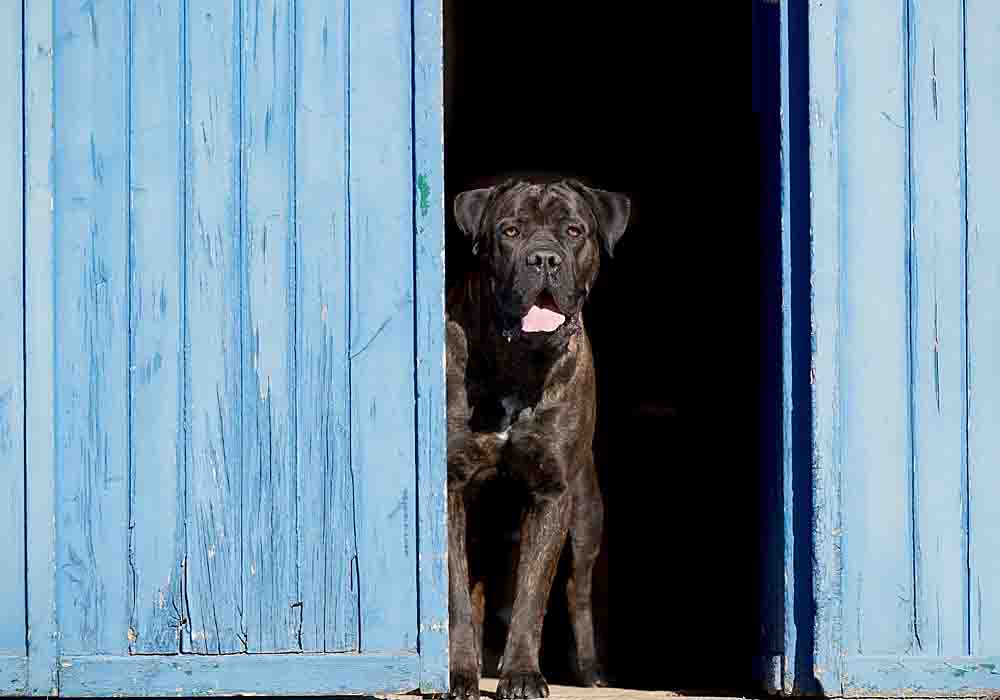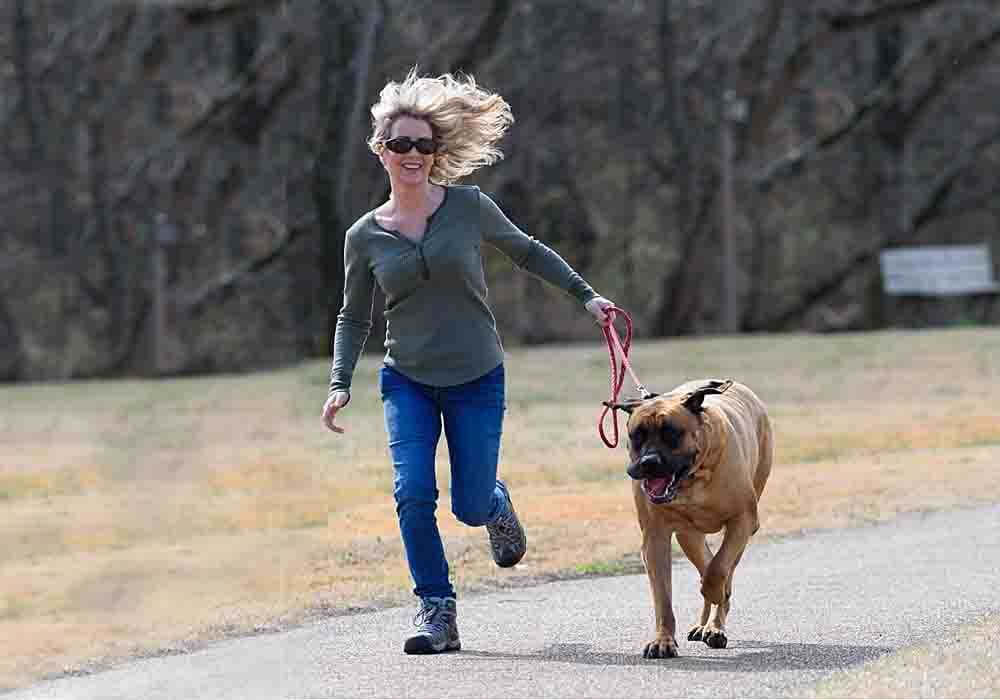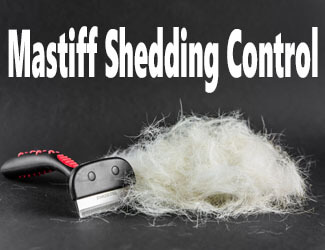Can A Mastiff Live Outside?
Can They Handle Cold Or Hot Weather?
by Ken Alden
Can a Mastiff live outside and tolerate hot or cold weather?
That's a question many future or even present owners have when they realize their Mastiff is taking up more room than a family of four and are wondering whether more outside time might be in order.
Can A Mastiff Live Outside?
The simple answer is no. Mastiffs are incredibly sensitive and cannot be left outdoors, exposed to the elements. However, they do enjoy their time in the open and need healthy exercise. Just keep in mind that while Mastiffs can be comfortable in cold weather, they have an incredibly low tolerance to hot or humid climates.
Are you still considering building a hut or kennel for your Mastiff and keeping him outside for a few hours? There are a few things that you should know! Read on to find out what your Mastiff needs while outdoors, how to make him more comfortable, and when is the best time of the year for them to be “camping!” Read More Below...
Pro-tip: Ever try lifting a Mastiff? Their weight can hurt not only your back but their joints when they hop down from cars, sofas or even your bed. To protect your back and theirs check out the best Mastiff ramps on Amazon.com now.

Can A Mastiff Be An Outside Dog?
The short answer is no; Mastiffs cannot live outside full-time. Such a lifestyle can take a toll on the physical and psychological health of your dog. So, where does the concept of a Mastiff being able to live outdoors originate?
The idea of the backyard dog has been set aside for quite a few years now. Originally large breeds were used as guard dogs, so keeping them in the area surrounding the house would increase the level of security. However, the great misconception that dogs should live outdoors collides with the nature of our puppies, who are pack and den animals and love companionship.
Animal behaviorists have found a connection between the lifestyle of dogs kept or chained outdoors and increased behavioral problems. Eventually, such a way of living can lead to aggressiveness and emotional instability.
Alongside this research, we know that Mastiffs are highly sensitive creatures whose feelings can be hurt easily and have long memories. Keeping them outside, alone, chained, or exposed to the elements can create a psychological scar that can be very difficult to heal later on.
On the other hand, Mastiffs are moderately tolerant of colder weather conditions and enjoy their time in a garden or lawn during the colder months of the year. In summer, however, the scorching temperatures can be extremely harmful to this lazy giant, who tends to overheat quickly.
Pro-tip: Mastiff anxiety, aggression, destructive chewing, jumping up, fearfulness, and other behaviors can be controlled with the right training program.
Here’s a great course that
addresses these issues along with many other dog training basics: Check it out now!
Protecting Your Mastiff From The Elements While Outdoors
As you now know, you can’t keep your Mastiff outside unsupervised or alone for days at a time. Yet, it can be very beneficial to leave your dog roaming around the garden for a few hours. When doing so, you should implement some measures that can help him feel safe and at home while you are not there.
- Build (or buy) a kennel, crate, or hut - this will allow your dog to feel safe while alone. A shelter will also protect your dog from the elements in case of rain, wind, snow, or even high temperatures. Don’t forget that Mastiffs can be scared easily. A large, spacious kennel can offer them a place to retreat.
- Make sure your dog has food and water - while you should not allow your Mastiff to eat continuously throughout the day, he should have enough food supply for the time he is outside. On the other hand, fresh, drinkable water should be available throughout the day.
- Add blankets and pillows - Digging is among the favorite hobbies of our Mastiffs as it is considered a fun, self-rewarding behavior. Adding blankets, rugs, and pillows in the kennel will help you save your garden from the potent paws of your dog!
- Make sure the area is fenced - A male Mastiff can be around 80cm (31in) tall at the shoulders and can easily jump any fence shorter than 150cm (5ft). It is vital to enclose your garden correctly to avoid incidents.
Can Mastiffs Handle Cold Or Hot Weather?
Mastiffs are incredibly powerful dogs, but they are also vulnerable and fragile in certain conditions. Temperatures and natural elements can have a significant impact on the health and physical conditions of your dog. To know when it is safe to leave your dog roaming around the yard for hours, check out the next chapters!
Mastiffs And Cold Weather...
Similarly to other large dog breeds, Mastiffs have a higher tolerance to colder climates. Some kinds, such as the Tibetan Mastiff, properly thrive in colder climates, as they are used to harsh winters and temperatures dropping below zero. However, not all Mastiffs are the same, and some have developed a higher sensitivity to cold climates.
Ideally, if you are leaving your dog outside during winter, you should supervise him should the temperature get 42 degrees F or lower. If you are looking at avoiding any risk altogether, allow your Mastiff out unsupervised only in temperatures ranging between 44 and 60 degrees but not for very long.
Pro-tip: Mastiff's (and their owners) love dog crates…and for good reasons. Crates keep dogs from mischief while you're away, are perfect for house training, for traveling by car, and provide the dog a place to de-stress. Check out the best Mastiff crates on Amazon.com now.
Mastiffs And Hot Weather...
Unlike cold weather, Mastiffs have an incredibly low tolerance to hotter and humid climates. Due to the enormous size of their bodies, Mastiffs are prone to suffer from overheating and heat strokes, even during a seemingly relaxed stroll outdoors.
With temperatures ranging between 70 and 78 degrees, you should keep your dog under supervision during walks, outdoor exercise, or even while roaming in the garden. Above 78F, the climate can be life-threatening for your dog, and you should avoid taking him outside altogether. can a mastiff live outside
During the hottest months of the year, you should implement some extra practices to guarantee the health of your pet. Here are some things to consider:
- Take your dog out for walks and exercise only during early morning or late evening when the temperatures are milder.
- Ensure that your dog has fresh, clean water throughout the day. Bring extra drinking water with you when taking your dog out for a walk.
- Avoid leaving your dog in a hot car, even for short periods.
- Allow your dog to exercise and play at his one pace. If he stops, he is doing so to cool down.
If your Mastiff show signs of overheating (panting, excessive drooling, instability, pale gums, collapse) you should immediately try to cool him down by:
- Splashing him with water. Use luke/room temperature water. Cold or icy water will cause the blood vessels to shrink, which will slow down the blood flow and, therefore, the cooling process.
- Set a fan to blow air on the dog. Or, while outdoors, move him to a shaded, colder area.
- Don’t force your dog to drink. Dogs cool down through panting. If they are busy breathing, drinking will slow down the process.
- Continue cooling your dog until the panting slows down, and he is ready to drink.
- Bring your dog to the vet when his body temperature has reached 103 degrees F to ensure that he is back in full health.
Can A Mastiff Live Outside?...Final Thoughts
While our Mastiffs’ size and elegance can suggest that they are invincible creatures, they can be vulnerable under many aspects. Mastiffs are incredibly sensitive to climate and habitat changes, and they like the company of their human friends. Leaving them outside for long periods can cause them physical and psychological stress.
If you are planning on letting your Mastiff roam in your garden or yard, make sure that outside temperatures are between 44 and 78 degrees. Over 78 degrees, your Mastiff will be at risk of suffering from overheating or even heat stroke. In the right climate, your lazy, gentle giant will love spending time outdoors with you!

About the Author...
Ken Alden, a dedicated Mastiff owner for over eight years, is acclaimed for his expertise in care, grooming, and training. Read more About Me and my dog Shadow.
- Mastiff Guide Home ›
- Mastiff Dog Information ›
- Can A Mastiff Live Outside









